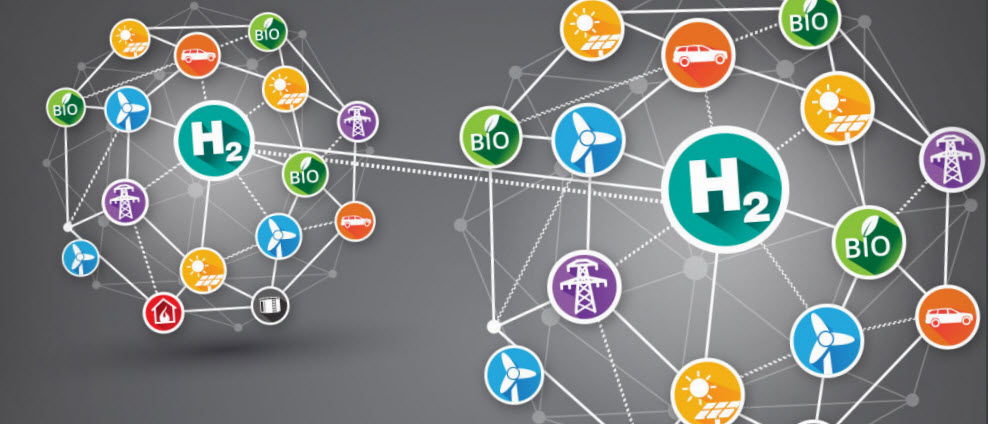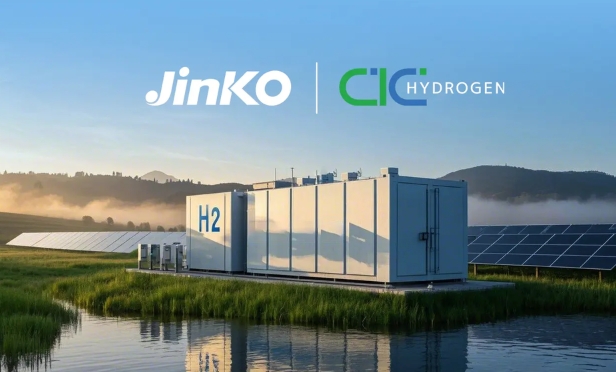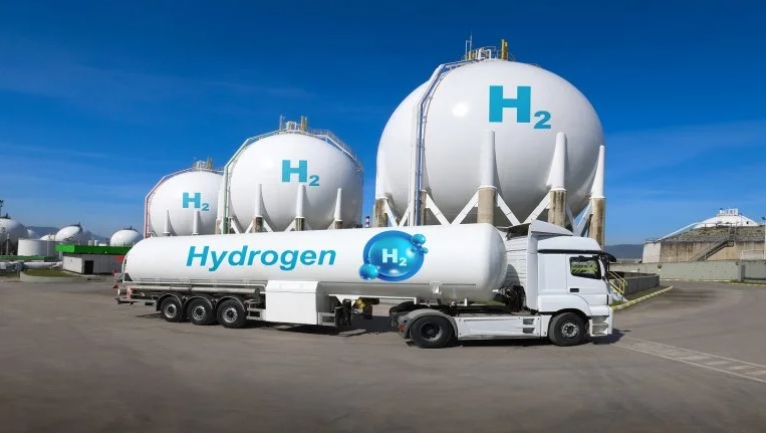
Even though the costs of solar and wind power have been falling steadily, renewable electricity still has a basic problem.
It’s not just that renewable systems can produce power only when the sun is shining or the wind is blowing.
An equally big problem is that they often produce electricity when it isn’t really needed and can’t fetch a good price. In Northern Europe, where wind power is widespread, wholesale electricity prices periodically dip below zero in hours of high wind and low demand. It even happens with solar power in California.
Battery storage is a possible solution, but it’s expensive and not well-suited if the electricity has to be stored for weeks or an entire season.
But new research, coauthored by Stefan J. Reichelstein at Stanford Graduate School of Business, finds that a partial solution may lie with hybrid energy systems that use surplus renewable electricity to make pure hydrogen.
Hydrogen is an important commodity that’s used in many industries, from fertilizer to pharmaceuticals, and there is a well-established market for it. Hydrogen can also serve as a medium for storing electricity until it’s needed. Currently, most of the hydrogen for industrial use is produced from natural gas through a process called “steam reforming.” But that process results in carbon dioxide emissions.
Germany already has some 30 hybrid energy plants that take the surplus electricity from solar or wind farms and feed it into a power-to-gas process that relies on electrolysis to split water molecules into hydrogen and oxygen.
Similar pilot projects are popping up in Texas, and a Japanese industrial group just announced plans for a massive clean-energy storage facility in Utah that would rely in part on hydrogen from renewable electricity.
The question is whether such hybrid energy facilities are worth the investment. Would the extra revenue from hydrogen sales be enough to justify investment in a power-to-gas facility? More ambitiously, can the addition of a power-to-gas facility make the entire hybrid energy system competitive, even though renewable power generation by itself is not?
Does Hydrogen Pencil Out?
The answer depends heavily on the relative selling prices of hydrogen and electricity — and both of those are moving targets.
To get at that question, Reichelstein teamed up with Gunther Glenk at the Technical University of Munich to analyze the profitability of energy systems that combine wind power with power-to-gas facilities in both Texas and Germany.
Stefan J. Reichelstein said “From the standpoint of investors, it’s not helpful if your system generates power at times when prices are low.”
Hydrogen prices vary based on the volumes being sold, with lower prices for high volume contracts. Wholesale electricity prices fluctuate constantly, and sometimes sharply. They climb during peak-demand hours, such as on hot summer nights. They can plunge, however, during off-peak hours in areas where solar panels are feeding into the grid.
“From the standpoint of investors, it’s not helpful if your system generates power at times when prices are low,” Reichelstein says. “You want to find a different use for that power, so you don’t have to sell it at low prices. That’s why many people think hydrogen can play an important role in a decarbonized energy economy: You no longer rely on carbon dioxide emitting natural gas to produce hydrogen, and you give renewables a revenue boost by not having to sell power at times with unfavorable market prices.”
Reichelstein and Glenk collected data on equipment costs, hydrogen prices, and — the hardest part — hour-by-hour wholesale electricity prices and wind power generation data for a full year in both places.
Their findings: Such hybrid energy systems break even if the hydrogen can sell for at least $3.50 per kilo. In practice, Reichelstein says, that means a hybrid facility makes financial sense if the hydrogen can be sold to small- and medium-scale buyers of hydrogen who generally pay about $4 per kilo already.
The numbers don’t yet work for bigger hydrogen customers, who pay prices closer to $3.
But Reichelstein and Glenk say that could change over the new few years, because prices for electrolyzers have been falling steadily and are likely to keep falling as they come into widespread use.
“The costs of electrolyzers are coming down in a similar fashion we have seen for renewable power generation,” Reichelstein says. “If that keeps up, hybrid energy systems will significantly advance the business case for both renewable power and carbon-free hydrogen.”







